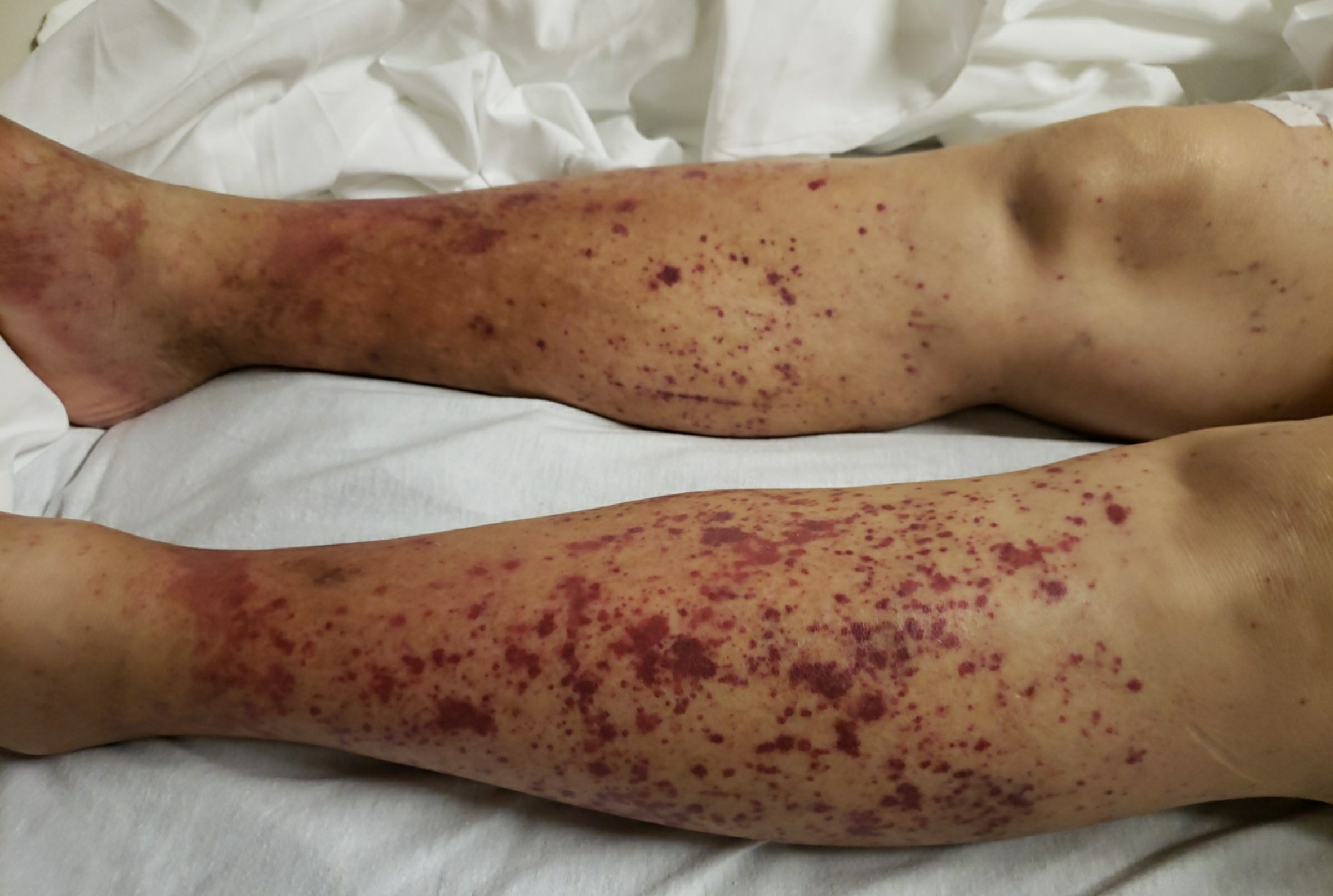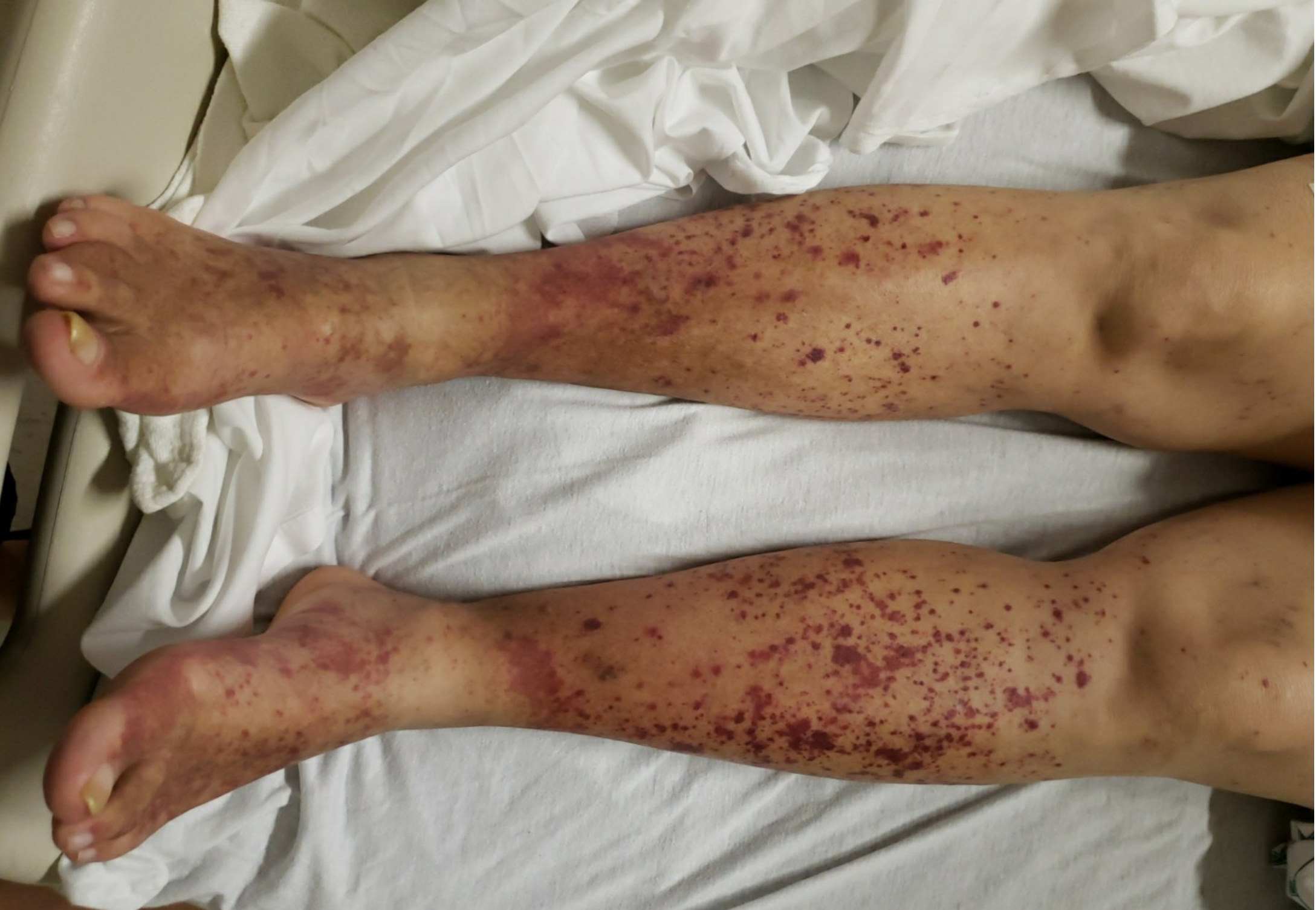Case Presentation: A 54 y/o lady with a past medical history of HCV cirrhosis s/p Harvoni treated 5 years ago, IVDU now on methadone who presented to the ER with a lower extremity rash that started two days ago. They were multiple tender nonblanching, red to purple petechial and purpuric lesions on the bilateral lower extremities. No malar rash, no telangiectasias, no digital ulcers were reported. The patient denied any precipitating event such as trauma, new medications or recent respiratory or gastrointestinal illnesses. No recent sick contacts or travel. She denied any fever, chills, weight loss, eye pain or redness, oral or genital ulcers, cough, shortness of breath, abdominal pain, nausea, diarrhea, melena, hematochezia, hematuria, dysuria, Raynaud’s phenomenon, motor weakness or paresthesias. She also denied using IV drugs for many months.Labs done during hospital course revealed: Negative HCV viral RNA, positive cryoglobulins, positive rheumatoid factor, Decreased C3, C4 levels, negative ANA and dsDNA, negative ANCA, negative anti-CCP, negative SSA, SSB, negative SPEP/UPEP. A biopsy of the skin rash was performed that revealed leukocytoclastic vasculitis. After Rheumatology consultation it was thought that her clinical presentation and the skin findings were consistent with mixed cryoglobulinemia. The predominant organ involved was skin, there was no renal, arthritic or pulmonary involvement. The patient was then treated with a tapering dose of prednisone starting at 60 mg/day and was subsequently tapered off of it. This caused the resolution of her skin symptoms.
Discussion: Mixed Cryoglobulinemia is a vasculitis caused by circulating cryoglobulins (cold-precipitable immunoglobulin) or monoclonal/polyclonal IgM directed against a polyclonal IgG. It is most often induced by hepatitis C (HCV) infection although can also be associated with autoimmune or lymphoproliferative disorders.With respect to HCV associated MC, it has been noted that patients who do not achieve/maintain SVR (sustained virologic response) do not show permanent improvement or disappearance of the disease [1]. Of note, vasculitis can occur within weeks to months after the successful completion of HCV treatment. However, presentation of MC months to years after successful HCV treatment and negative viral load has only been reported in very few case reports. Manifestations have been noted to vary from mild disease (mild dermatologic involvement with no evidence of organ threatening process) to severe ( life-threatening multiorgan failure) [2]. For most patients, treatment mainly remains high dose corticosteroids with or without Rituximab.
Conclusions: Mixed Cryoglobulinemia is an autoimmune disorder associated with hepatitis C that has significant morbidity and mortality [3]. Presentation after successful HCV treatment is rare and has been noted only in case reports. Hence, we wanted to emphasize the importance of considering this identity in patients presenting with vasculitis, especially with a history of prior hepatitis C infection. The biochemical/physiologic basis of this uncommon presentation of MC is not clear but it has been hypothesized that delayed clearance of circulating cryoglobulins compared with HCV clearance, or incomplete suppression of B-cell clonal proliferation may be driving cryoglobulin production [4]. For diagnosis, a high index of clinical suspicion is needed. Dermatology and rheumatology consultation is advised to reach a prompt diagnosis and initiation of tailored therapy accordingly.


